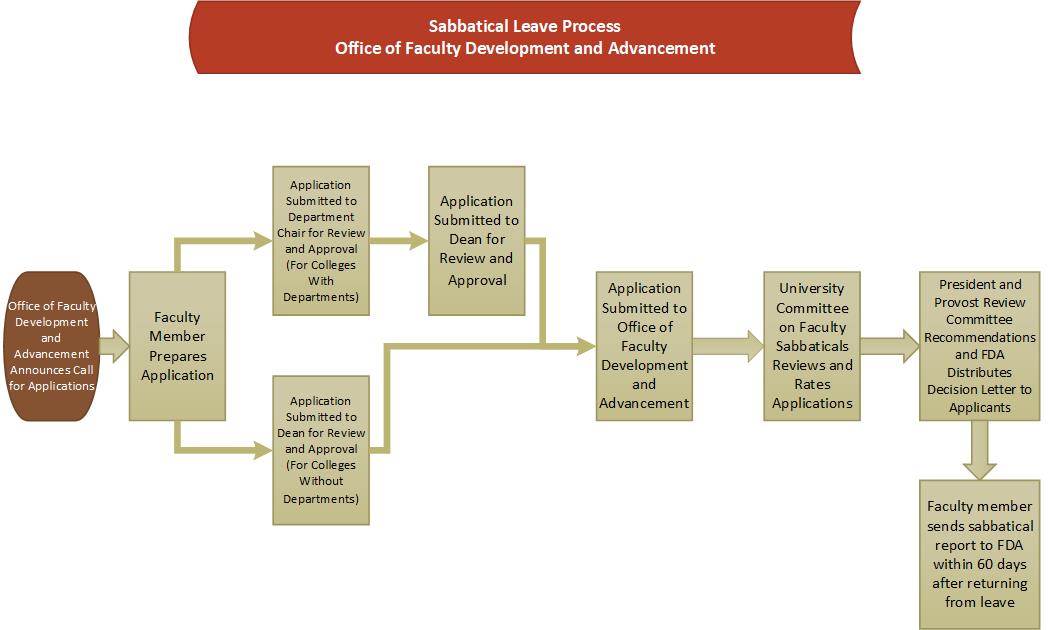Academic Leadership Toolkit
Sabbatical Leave Process
Overview:

Goals:
- To provide full-time tenured faculty members (who have at least six years of full-time service) with a professional opportunity to pursue specific research or creative activities while on leave from regular duties.
- Projects accomplished on sabbatical leave should increase the faculty member’s value to the University as well as enhance the faculty member’s research or creative activity agenda. This, in turn, should bolster their chances of being promoted (if applicable), and/or obtaining national or international recognition for their work.
- When a sabbatical has been granted but the department’s staffing needs preclude it from being taken, the leave is postponed for a year or another time agreed to by the faculty member and the university.
Authority and Responsibility:
- Sabbatical policy and procedure is governed by the FSU BOT-UFF Agreement, Article 22.
- The selection process involves peer review and is coordinated by the Office of Faculty Development and Advancement.
- Department chairs and deans may choose whether to approve each sabbatical application.
- Faculty members granted sabbatical leave must return to FSU for at least one year following the leave and must report the outcome of their project within 60 days of their return to campus.
Common Pitfalls:
- Faculty do not fully follow the proposal instructions in the annual invitation for applications.
- Departments and/or colleges do not fully review applications before they are submitted to FDA.
- Faculty members who take sabbaticals sometimes file their reports late, which creates potential audit problems.
- Chairs are not obligated to endorse a faculty member’s application if they cannot afford for them to be gone for the term/year requested.
Resources:
- The Office of Faculty Development and Advancement issues an annual invitation for applications that includes detailed instructions for applicants and others involved in the sabbatical process.
- FSU BOT-UFF Agreement, Article 22
- Faculty Handbook, Section 5

